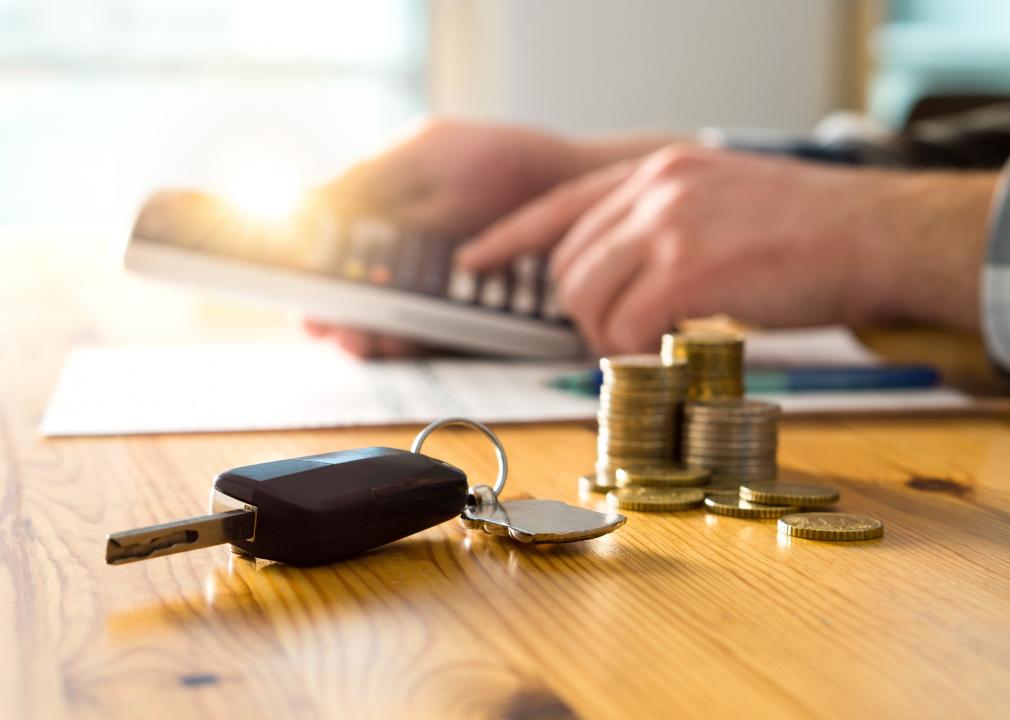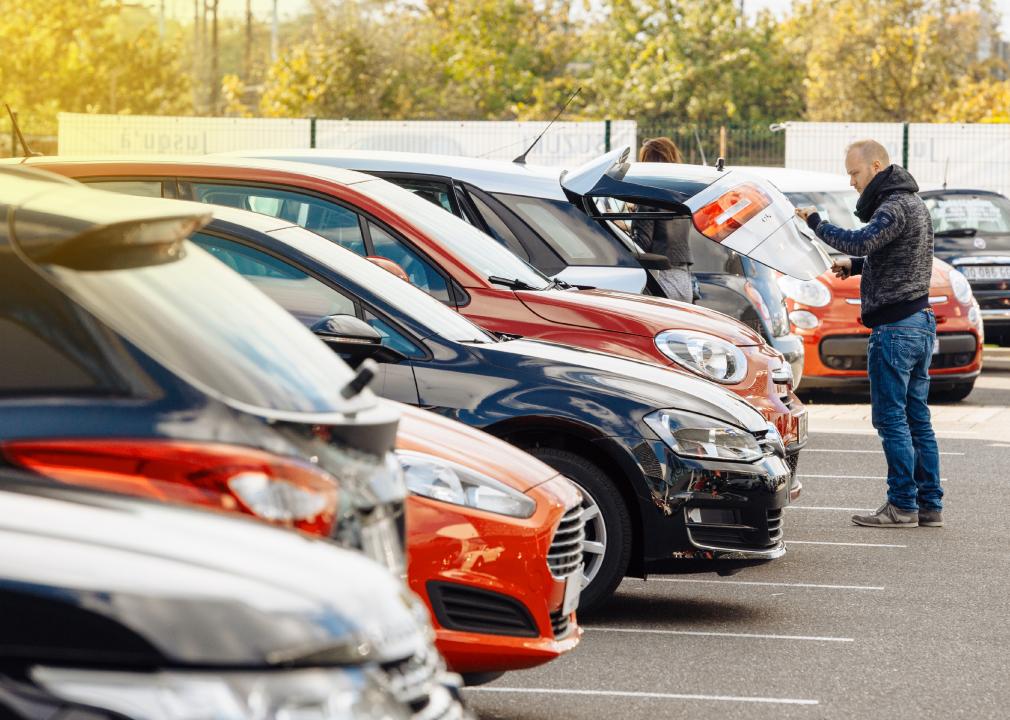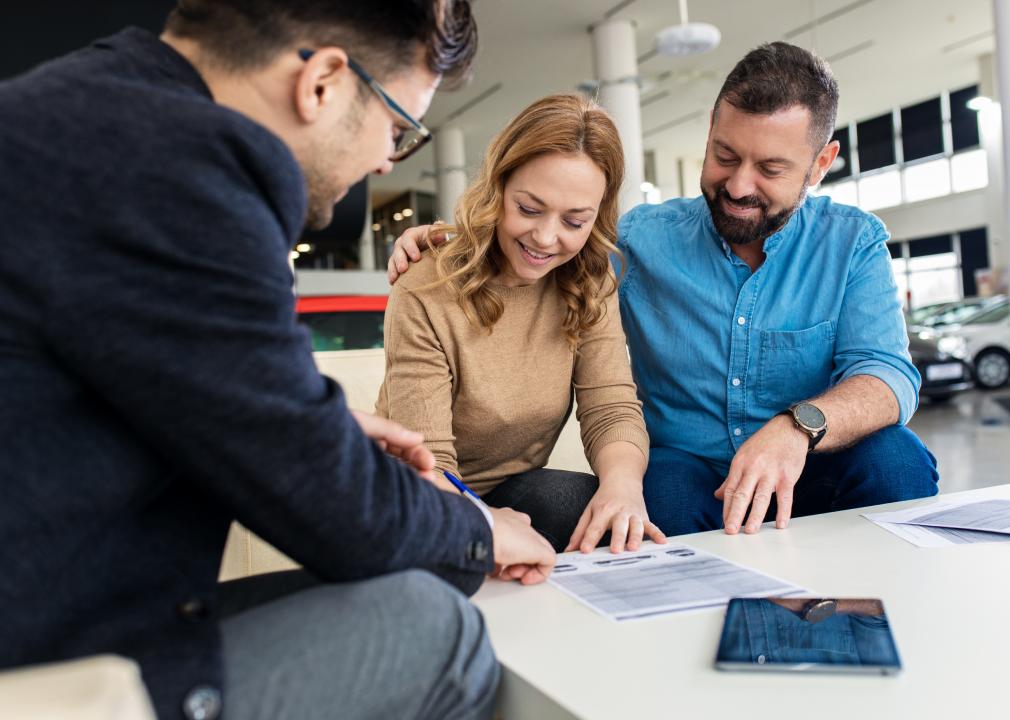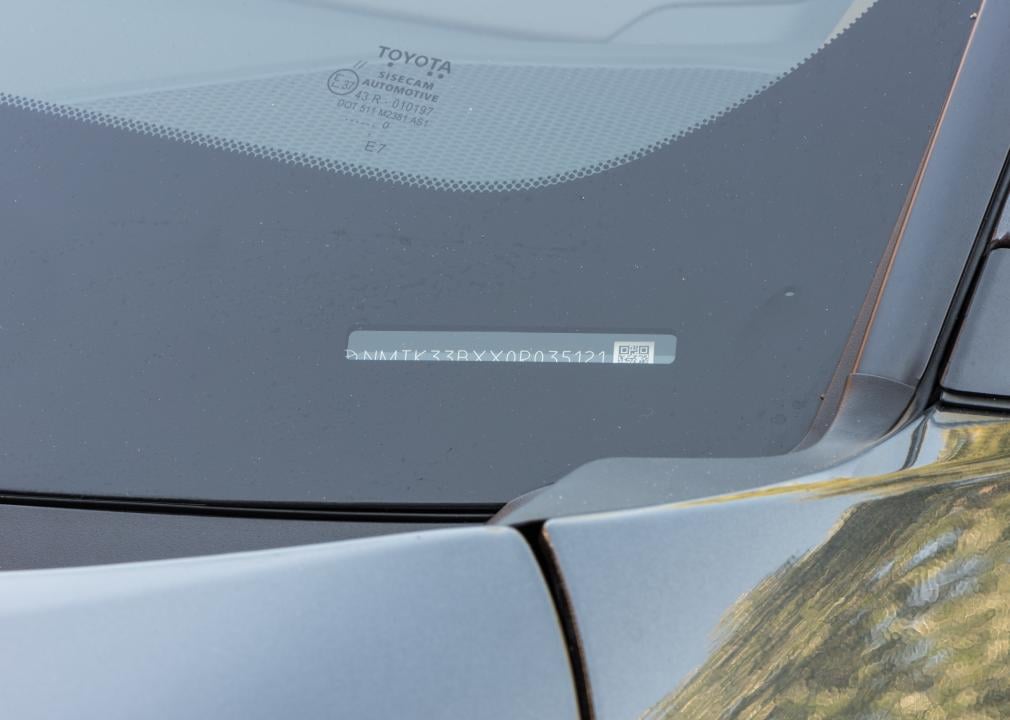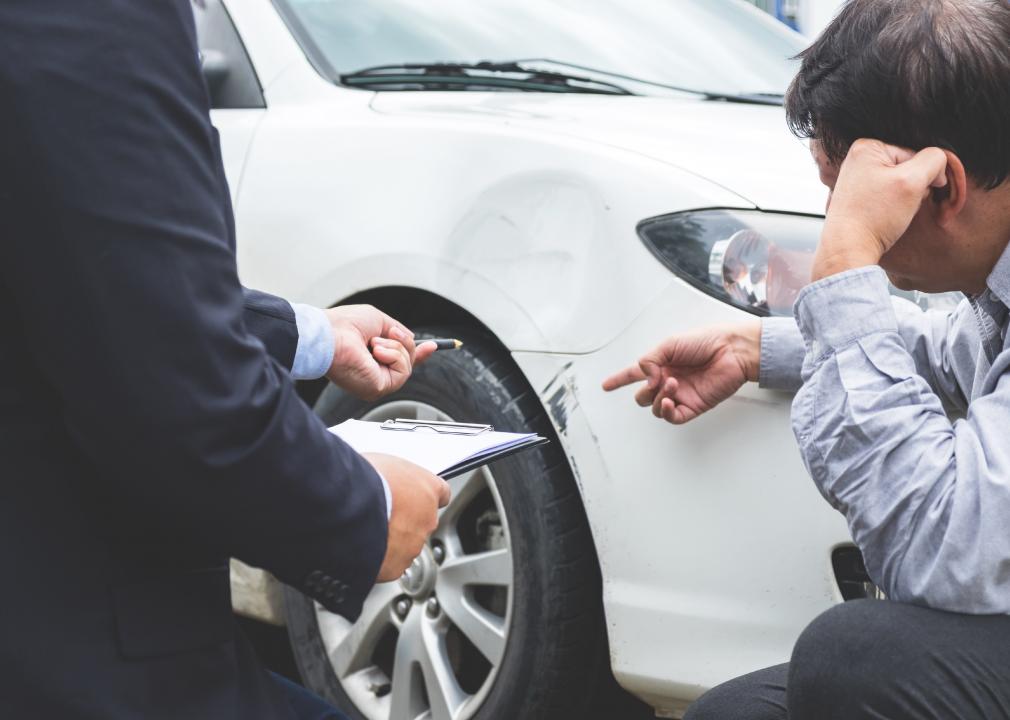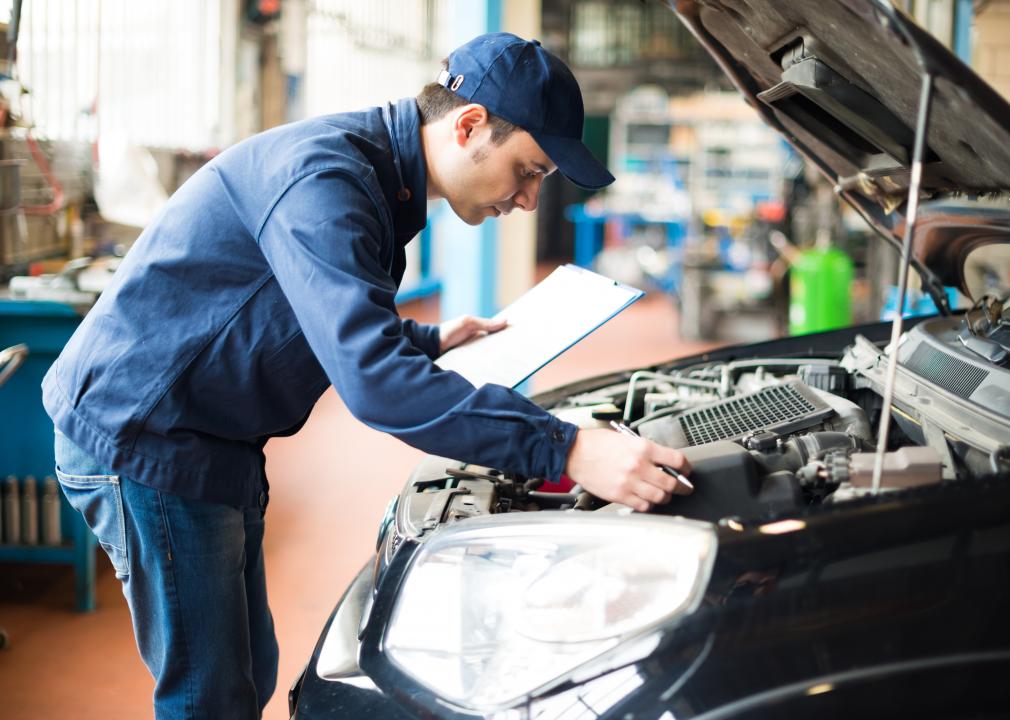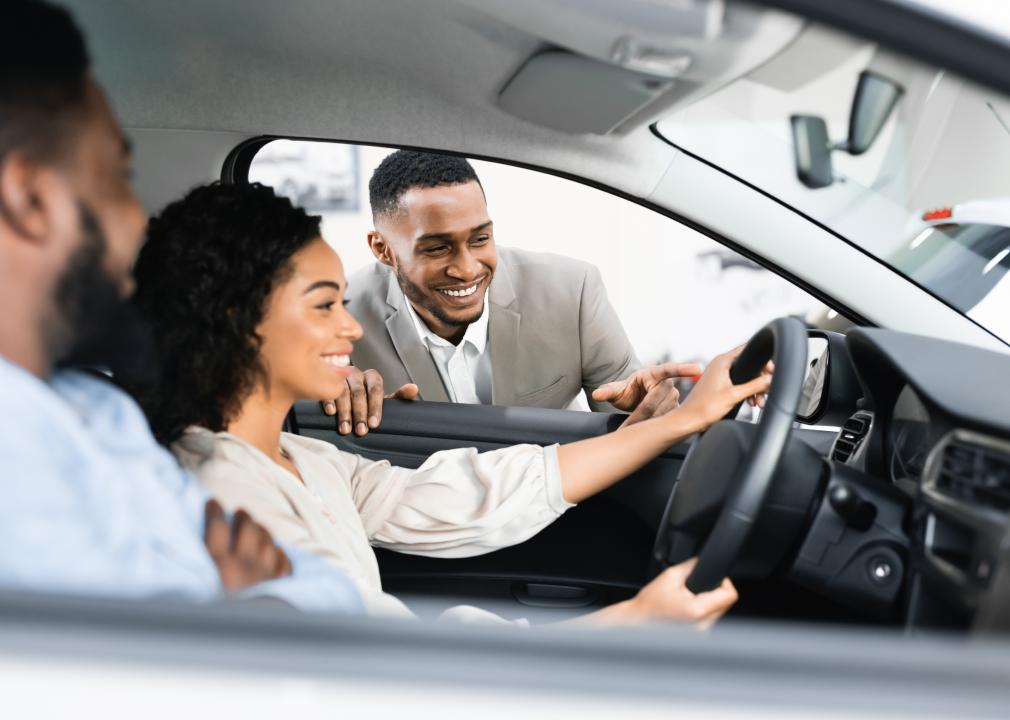What to look for when deciding on a used car

Photo credit: Ben Harding // Shutterstock
Just the thought of car shopping is enough to put a bad taste in most people’s mouths. Stories abound of well-intentioned customers getting talked into a pricey new ride by smooth-talking salesmen. That’s particularly true when it comes to used car shopping: No one wants to end up with a lemon, and first-time car buyers are often particularly nervous about buying a used vehicle in need of extensive work down the road—or in the next month or two.
Still, the lower prices that come with used cars make them undeniably appealing, especially if you’re working with a tight budget. As long as you do your homework and ask plenty of questions before signing on the dotted line, it’s absolutely possible to buy a quality used car that will serve you well for years to come.
To help consumers make a savvy car-buying decision, CoPilot compiled a list of 10 key things to consider when deciding to buy a used car from expert sources such as financial outlets, insurance companies, and government agencies. Think of these 10 steps as a framework you can use to approach the car-buying process, from the moment you start shopping to finally negotiating with the seller or dealer.
Before you head to the nearest dealership or even start browsing online listings, read through this list to ensure you know what you’re really looking for and how to evaluate whether a used car is a good deal or not. It’s not as simple as finding a cute model in a great color that’s the right price; you also need to discern how much wear and tear is on the vehicle. Keep reading to learn the difference between highway and city miles, find out why the VIN number is so important, and discover the few things you might want to do in person.
Alfa Studio // Shutterstock
Research the model that’s right for you
Before you start shopping, it’s important to have a clear idea of what you want in a used car. Consider the car size, number of seats, gas mileage, amount of cargo room, transmission, engine size, driving style, and any other special features like built-in GPS or Bluetooth audio. Make a list of your needs and your wants, then do some research on models that could work for you.
HOW TO FIND A GOOD CAR DEALERSHIP
Most car dealerships are independently owned and operated, so you might pay thousands more in fees at one dealership than at another. Here’s how to find a good car dealership.
Tero Vesalainen // Shutterstock
Set your budget
It’s imperative to set a firm budget before you start shopping in order to avoid getting reeled into a higher number. Consider the down payment, or the amount you can put down at the time of purchase, and the monthly payments. Plan to spend 10–15% of your total monthly budget on vehicle expenses, including loan payments and routine maintenance. Used cars usually don’t require as high of a down payment as new cars—often, a downpayment of 10% will work. However, choosing to pay more upfront can reduce your monthly payments, which could be a smart decision in the long run.
Let the seller name the price of a vehicle before you. If you open with what you want to spend, it’s tough to drop your own price. If you show interest in a specific model and know the going rate, you can negotiate once the seller has put the price on the proverbial table.
wavebreakmedia // Shutterstock
Research financing options before you go to buy
Once you have a finalized budget, figure out how you will finance the purchase. If you’re not planning to purchase the car outright in cash, you’ll need to line up financing through a lender. You can secure financing through a bank, credit union, online lender, or even the car dealership. Request interest rates through multiple lenders and get preapproved before you start shopping for a car—emphasis on before. Getting preapproved ensures you’ll stick to your budget and helps simplify the negotiating process once you’re ready to buy.
Securing funding ahead of talking to a dealer will also allow you to comparison-shop: Many commercial sellers will tout the monthly payment rather than total cost, which is an easy way to rope potential buyers into a payment plan that stretches across years and loses sight of the total.
FIND THE PERFECT CAR, PAY THE BEST PRICE
Don’t overpay! Have CoPilot get the out-the-door price from the dealer, expose hidden fees, and equip you with expert negotiation tips. Get CoPilot’s help and get the best price with confidence.
Hadrian // Shutterstock
Consider the mileage
As you begin looking at used cars, take careful note of the mileage. Though cars with lower mileage might have less wear and tear than cars with higher mileage, they’re not always the best option: The way the car has been driven also matters. For instance, sitting unused for months at a time can cause plastic and rubber parts to get brittle and break prematurely and reduce the longevity of the car battery. City roads also tend to be harder on a vehicle than smooth highway driving. Be sure to ask the seller for as much information as possible about the way the car was used—including, if available, documentation.
Jaynothing // Shutterstock
Run a price comparison
Ensure you’re paying a fair price for a used car by comparing the asking price against the car’s book value and the price of similar models at other sellers. A car’s book value refers to the base retail value of the make and model but doesn’t account for the specifics of that particular car, like mileage and condition. Searching for similar models for sale in your area might give you a better idea of whether it’s priced fairly.
Zoran Zeremski // Shutterstock
Ask about any warranties
If you’re buying a used car from a dealer, make sure to ask if the vehicle comes with any warranties. It might come as is with no dealer warranty, with an implied warranty, with a full warranty, with a partial warranty, or with a manufacturer’s warranty. If the car does come with a warranty, get a copy of the dealer’s warranty document as well. Be sure to also research extended warranty options—these can offer full coverage including but not limited to total engine repair.
THE BEST YEAR OF TOYOTA RAV4s
The ultra-reliable Toyota Rav4 is one of the most popular SUVs in the country. We break down prices, mileage, and features for each recent year model & tell you which year of Toyota Rav4 is best to buy used.
Mark Anthony Ray // Shutterstock
Check the VIN number
Whether you’re buying a used car from a dealership or a private seller, ask for the VIN number so you can run a vehicle history report. This report includes ownership history, title reports, accident records, and service points. The car’s VIN number can also reveal whether or not there are any safety recalls on the model.
Freedomz // Shutterstock
Look for evidence of obvious external damage
While you can do much of your shopping online, you should see the used car in person before officially purchasing it. Take the opportunity to do a visual inspection of the car’s exterior, checking for any scratches, scrapes, dents, and rust on the body. Look out for misaligned panels, large gaps, mismatched paint, cracked glass, overly worn tires, dripping fluids beneath the car, and doors that don’t shut well—all could be signs of past damage or larger issues.
WHICH YEAR OF JEEP WRANGLER IS BEST?
There’s a ‘sweet spot’ in terms of the price-to-reliability ratio for used Jeep Wranglers. Here are the best year models of Jeep Wrangler to buy used - and which you should avoid.
Minerva Studio // Shutterstock
Have an independent mechanic check the car
It’s also a smart idea to ask if you can send the car to a mechanic for a more thorough inspection before committing to buying it. The mechanic might catch some more complex issues with the transmission, engine, or internal parts that you wouldn’t see from the exterior, and potentially save you a lot of money in the long run. Don’t forget to ask the seller if they’ll cover the cost of the inspection, either: Private sellers may not be willing to, but dealerships might.
Prostock-studio // Shutterstock
Take for a test drive
Take the car for a test drive before you buy it. Drive it on city streets and the highway, if possible, to see how it handles at different speeds and in different situations. Pay attention to how well the brakes work, listen closely for any strange engine sounds, make sure all the lights work, and check any special features in the interior. When you’re satisfied that everything works the way it should, you can sign all the paperwork and feel confident about your used car purchase.

